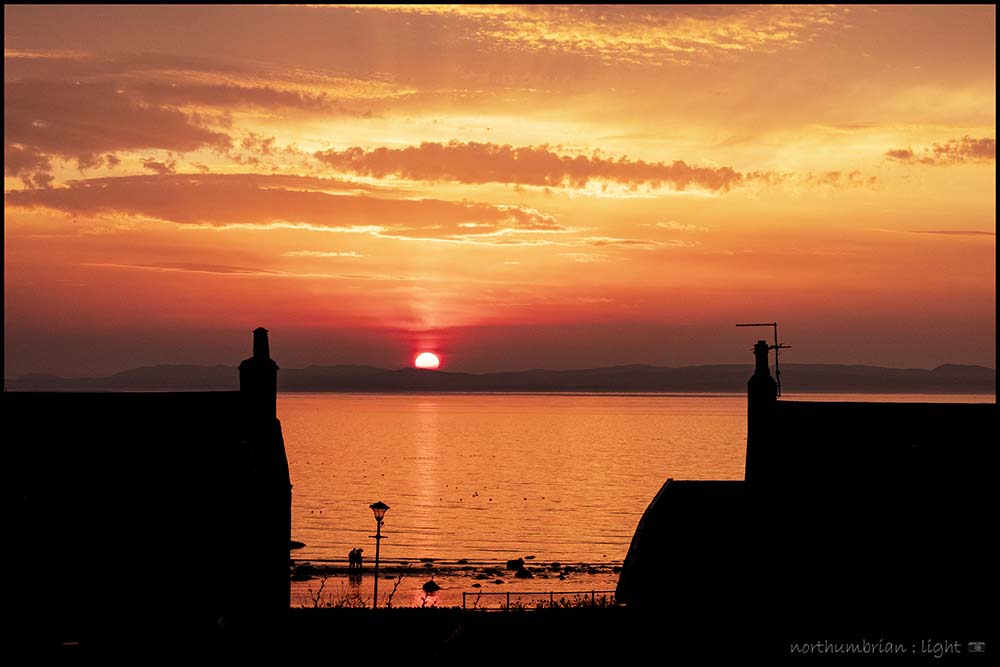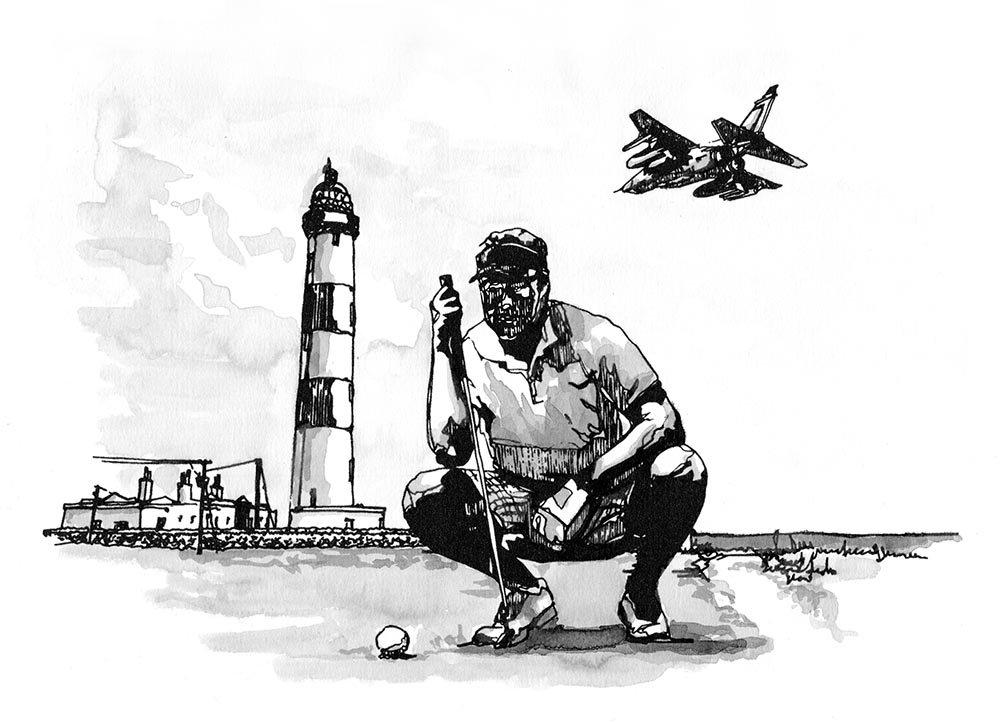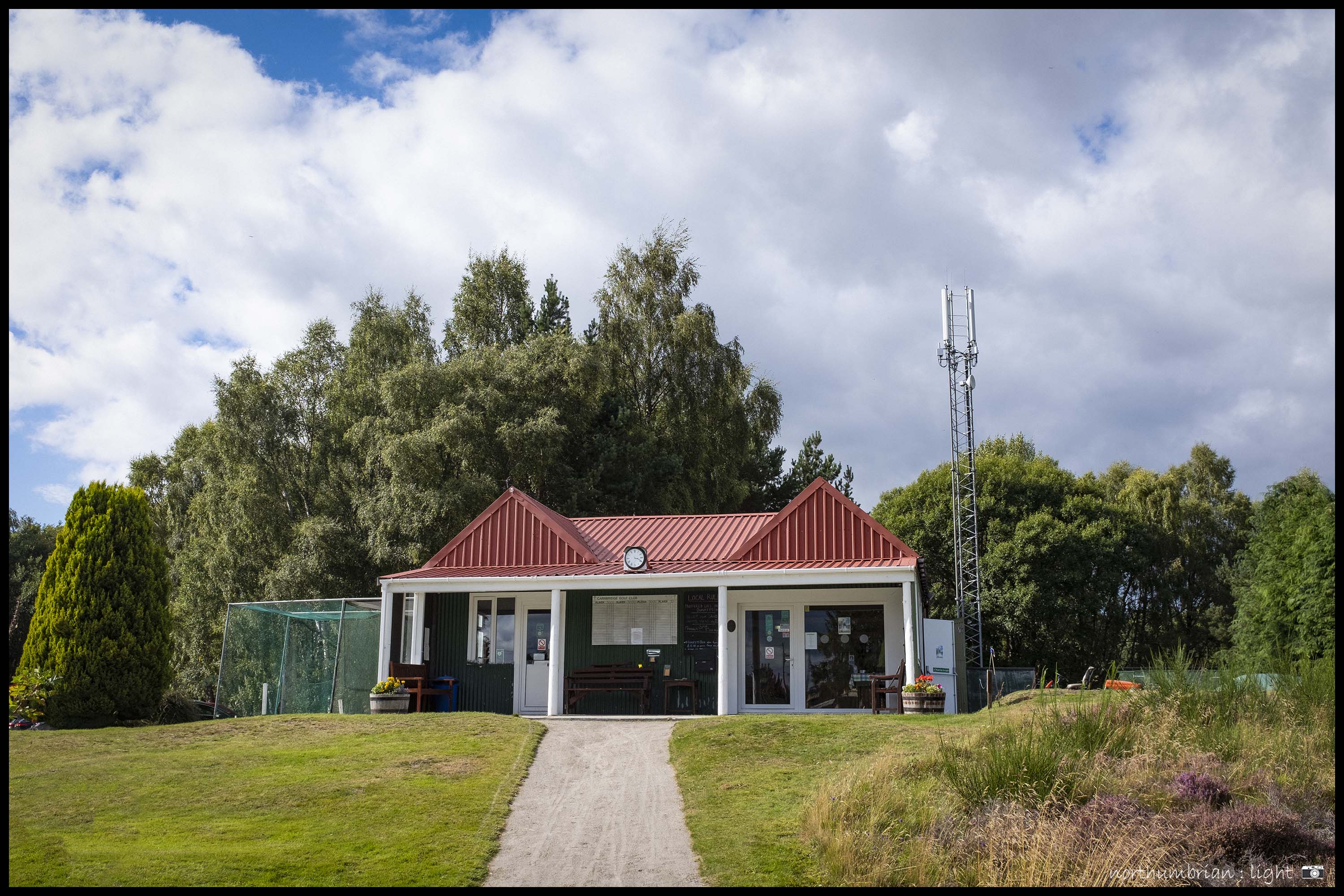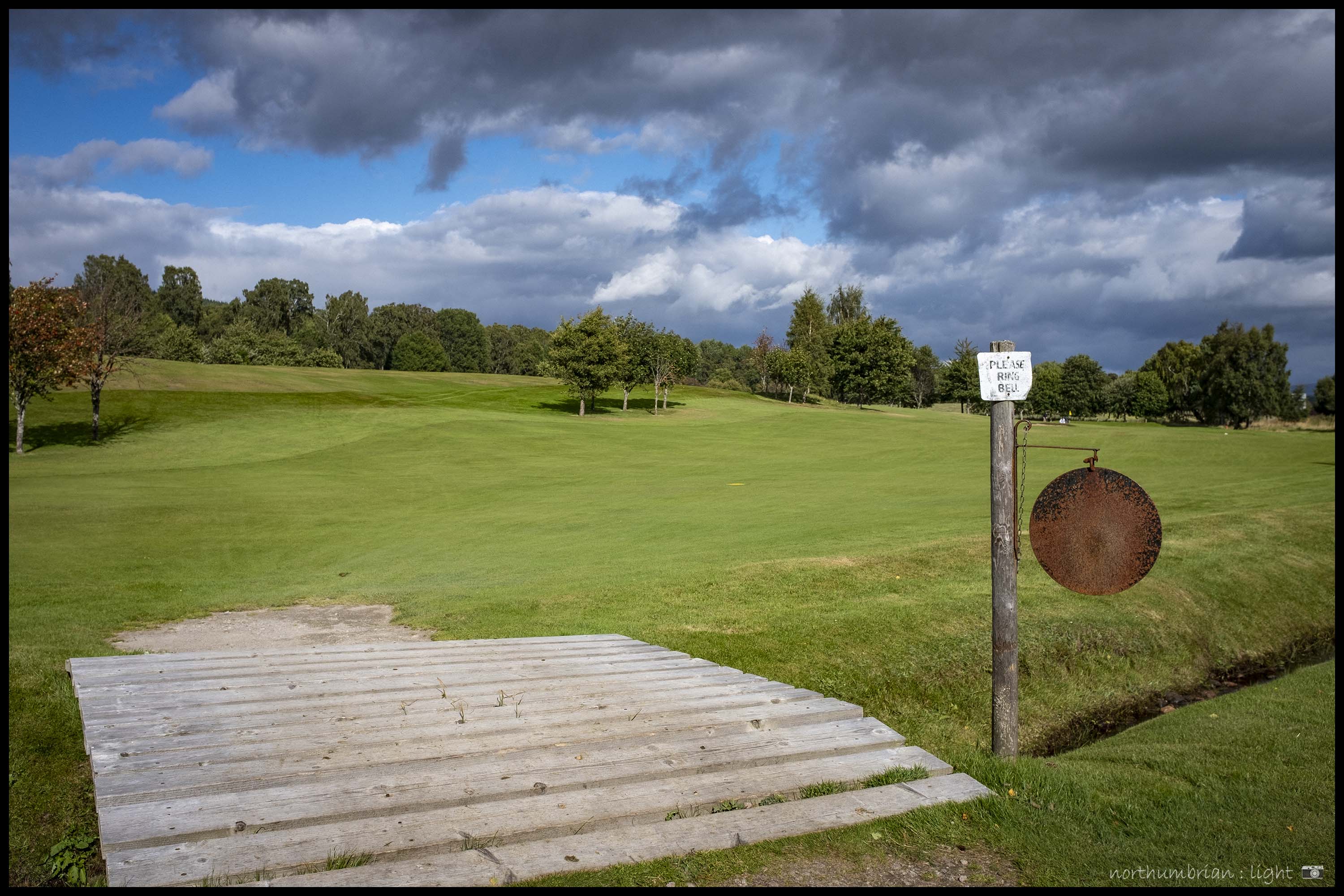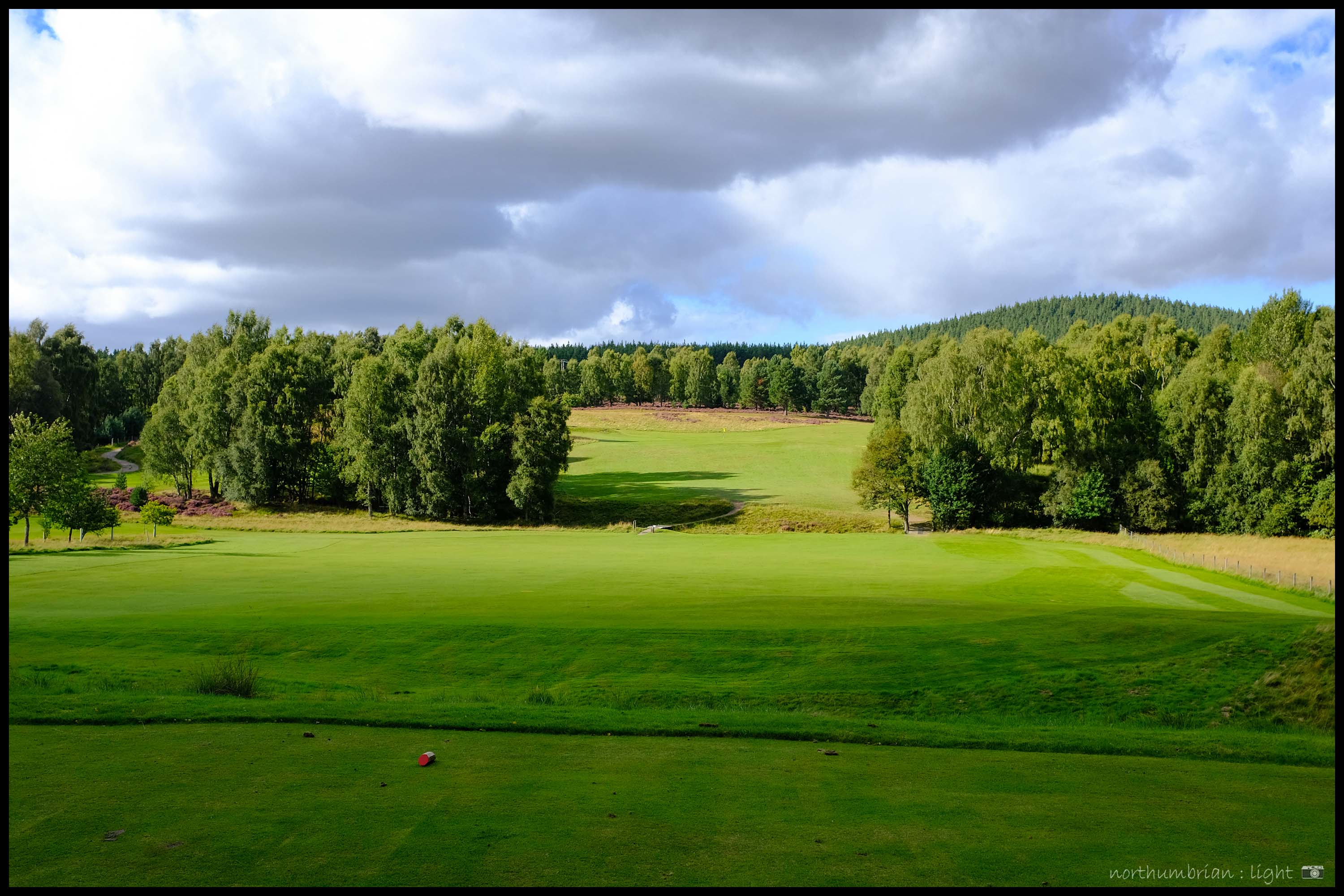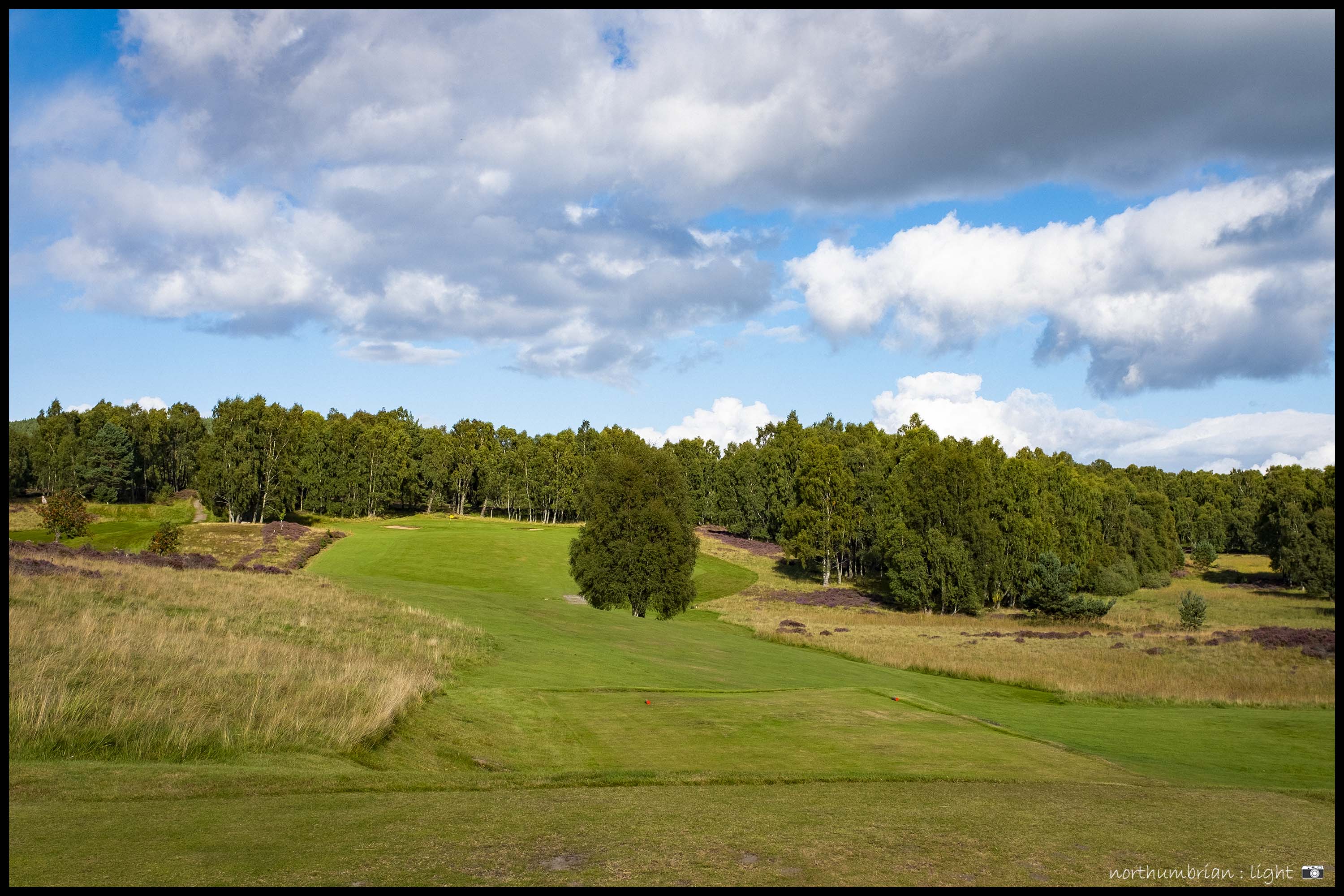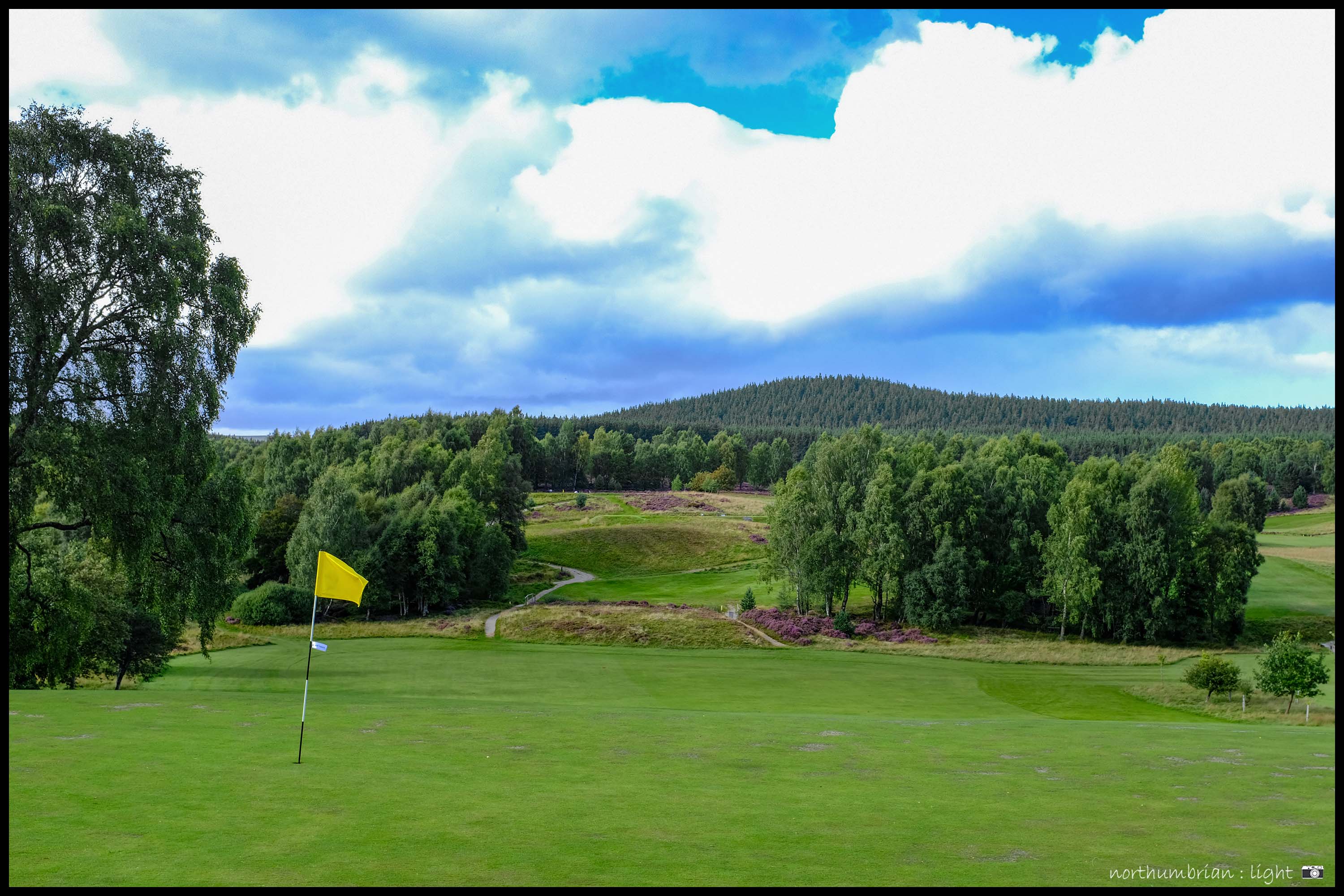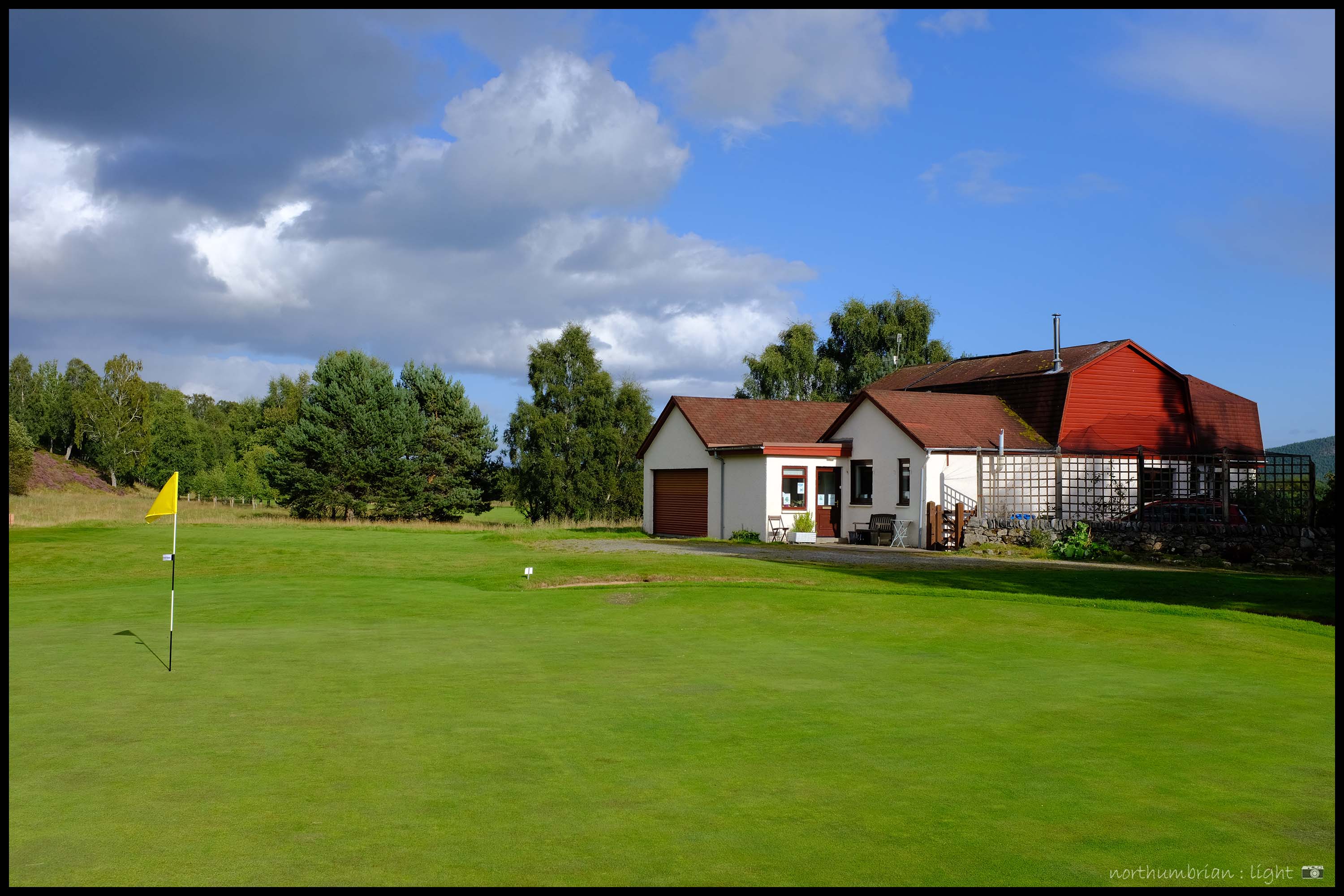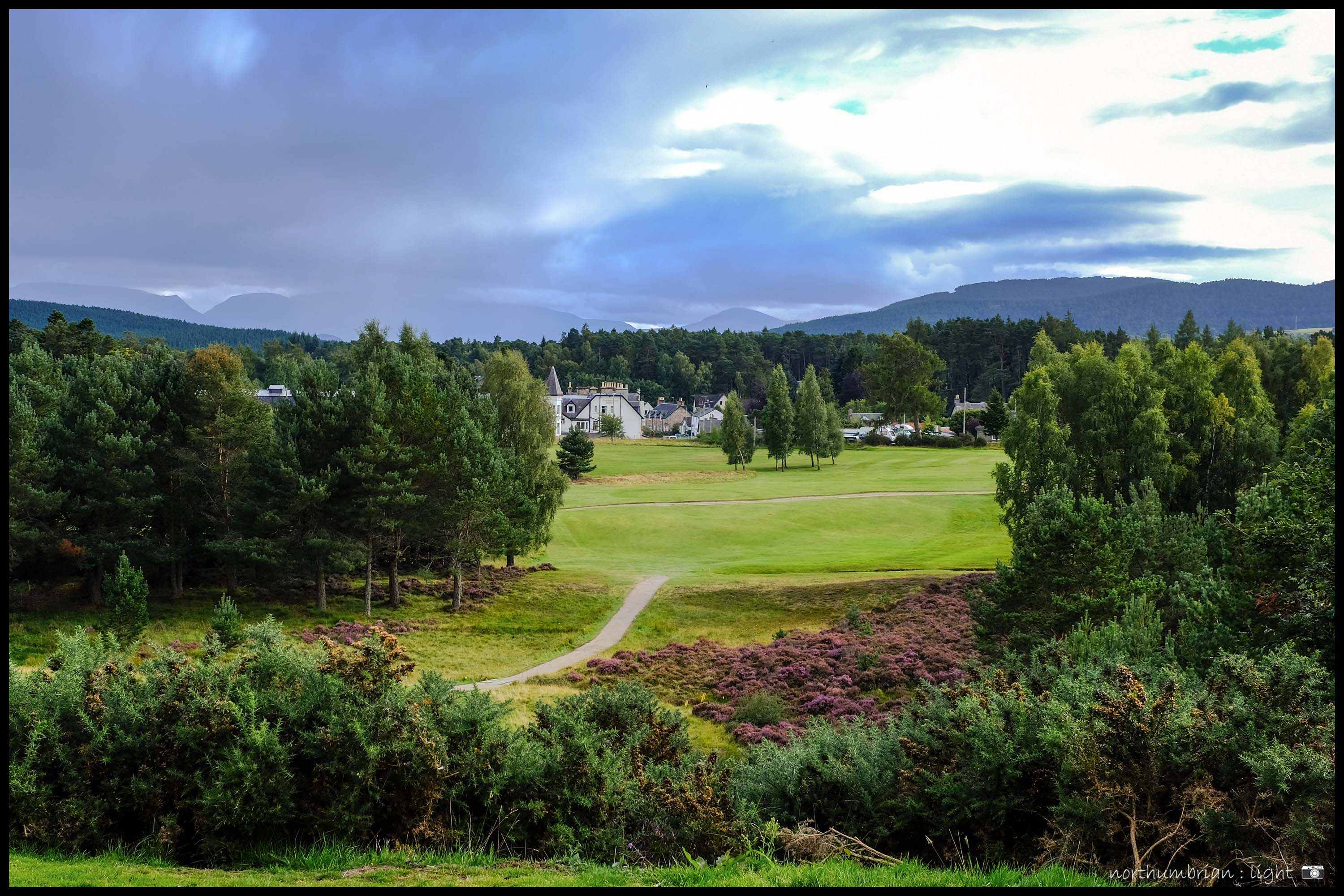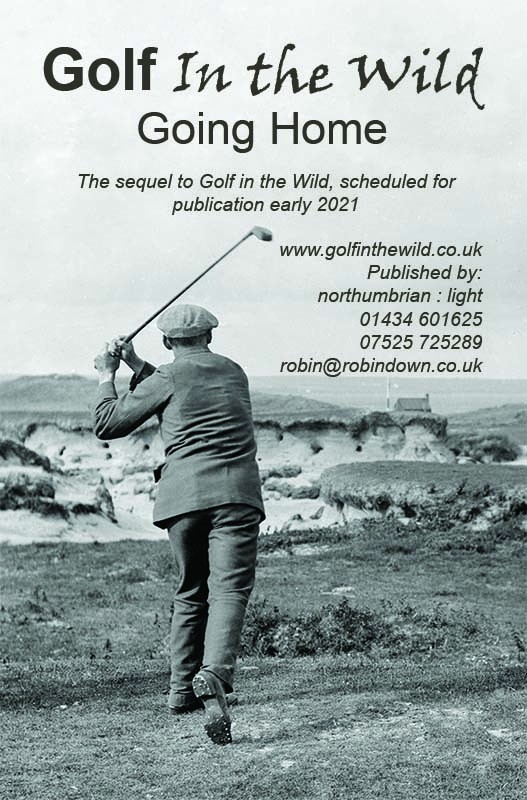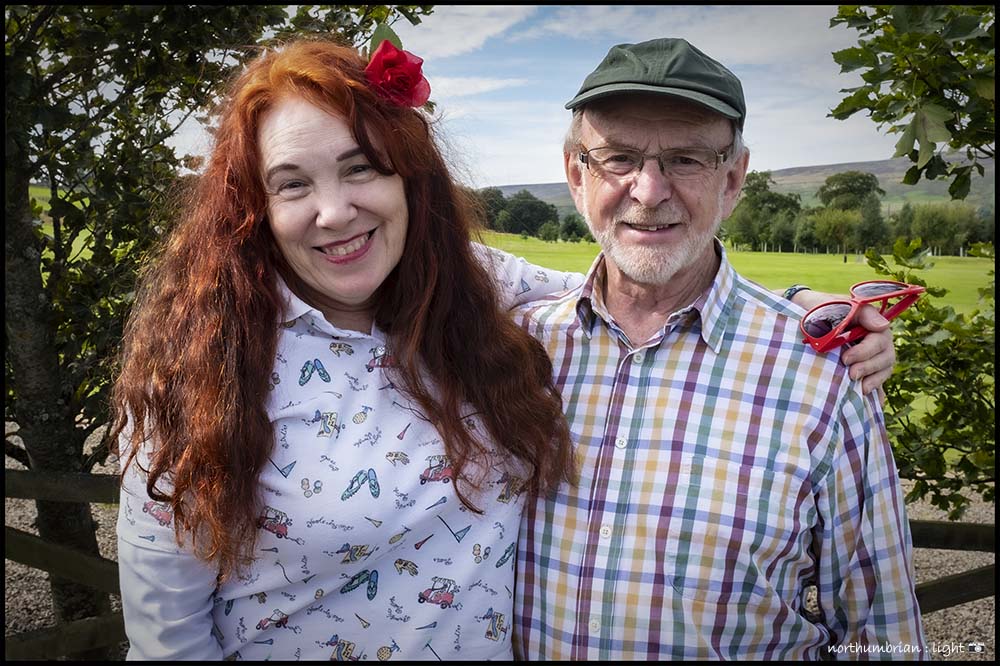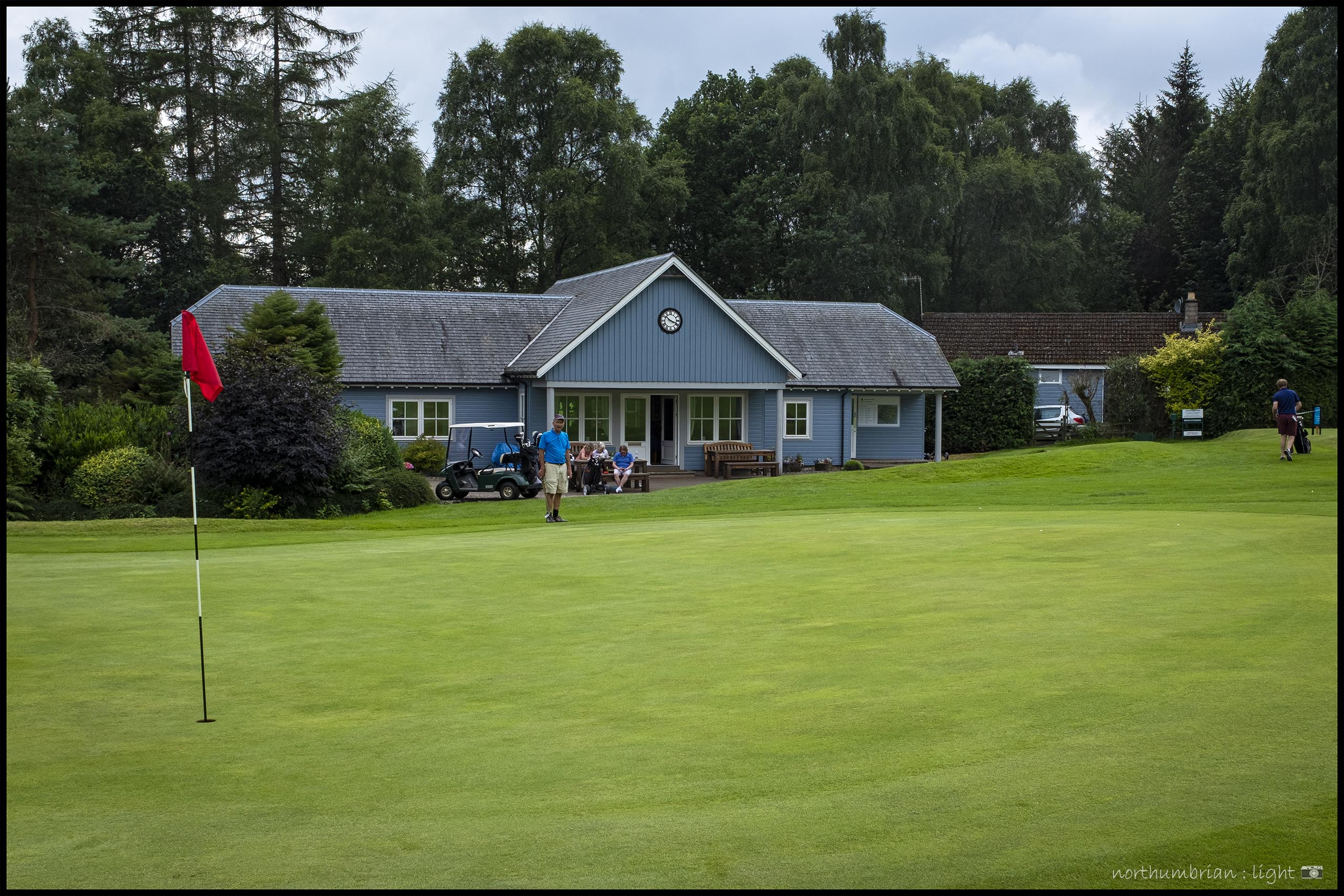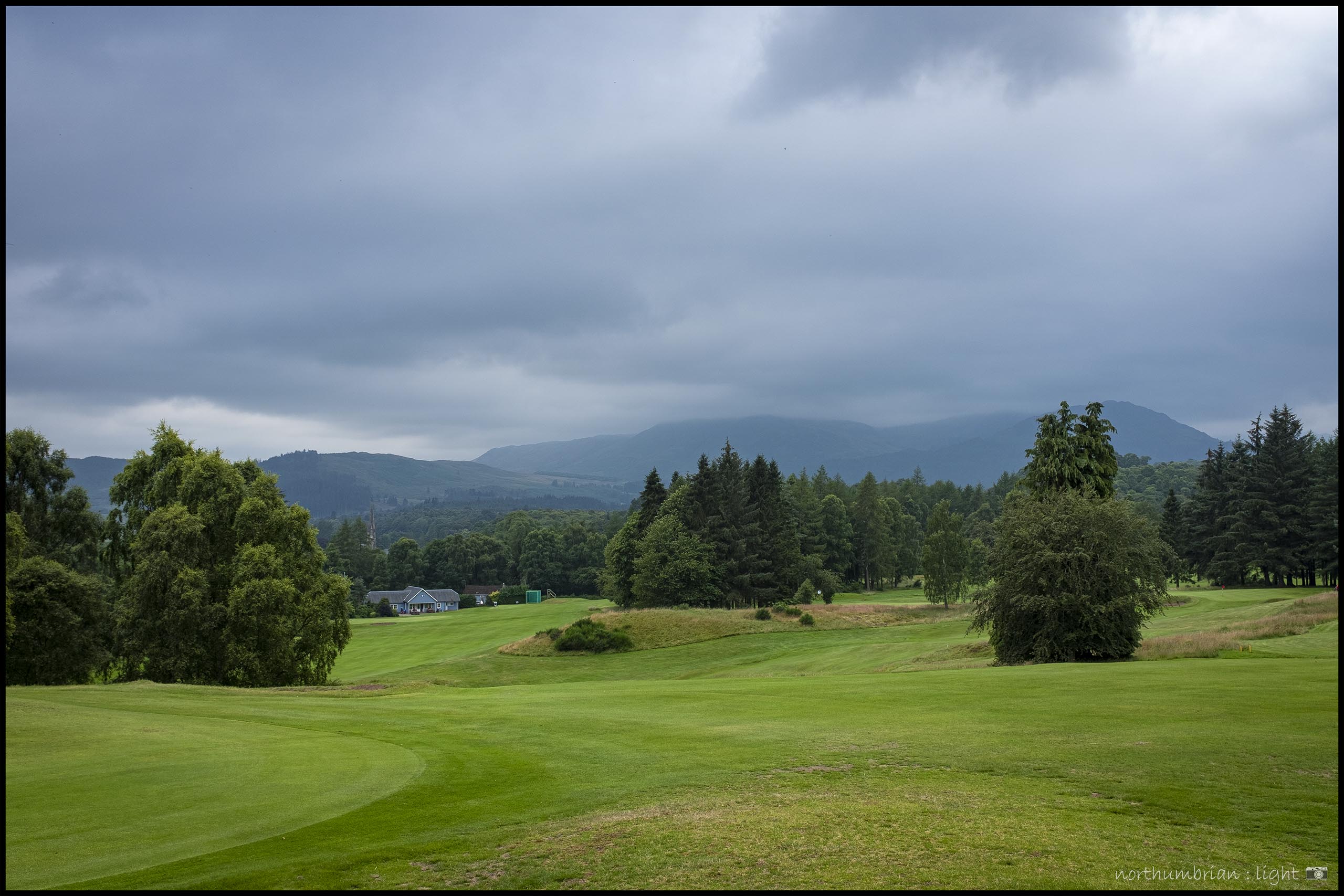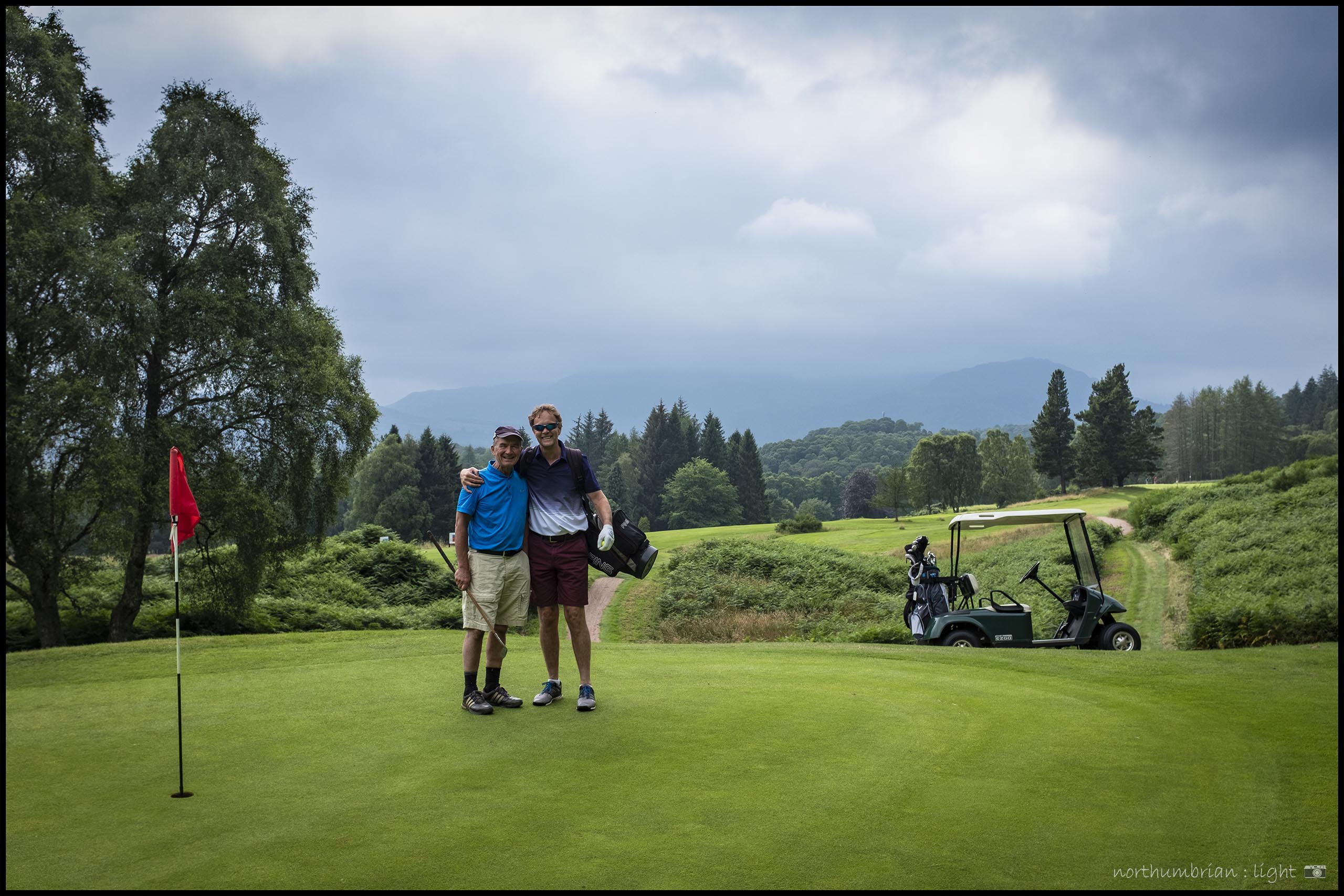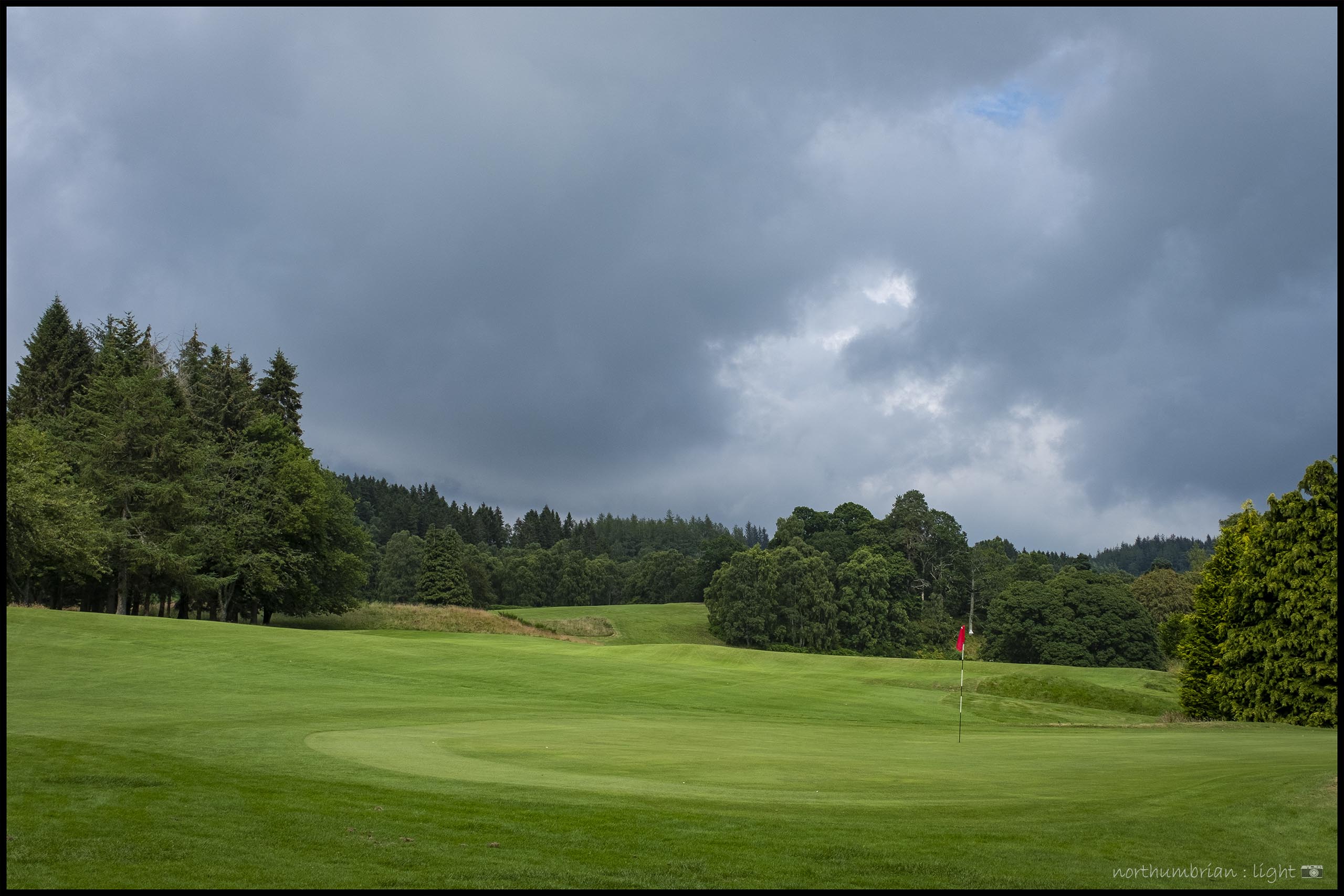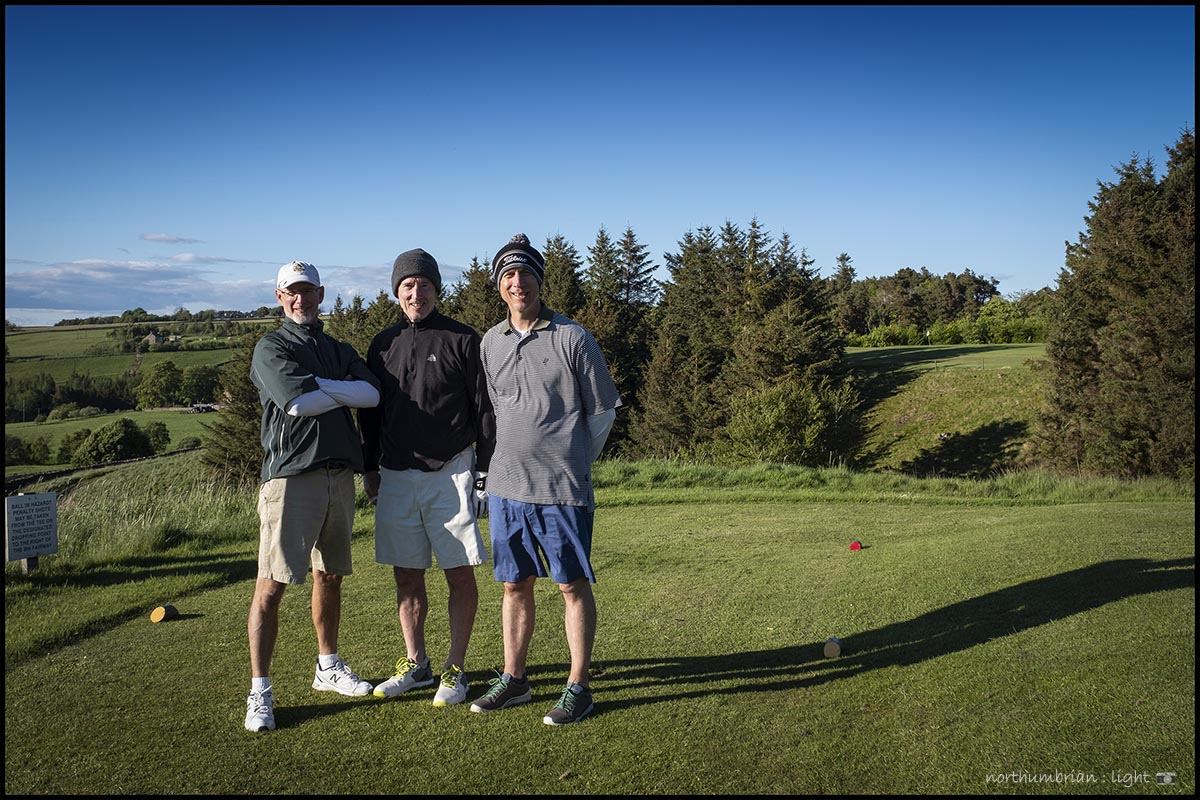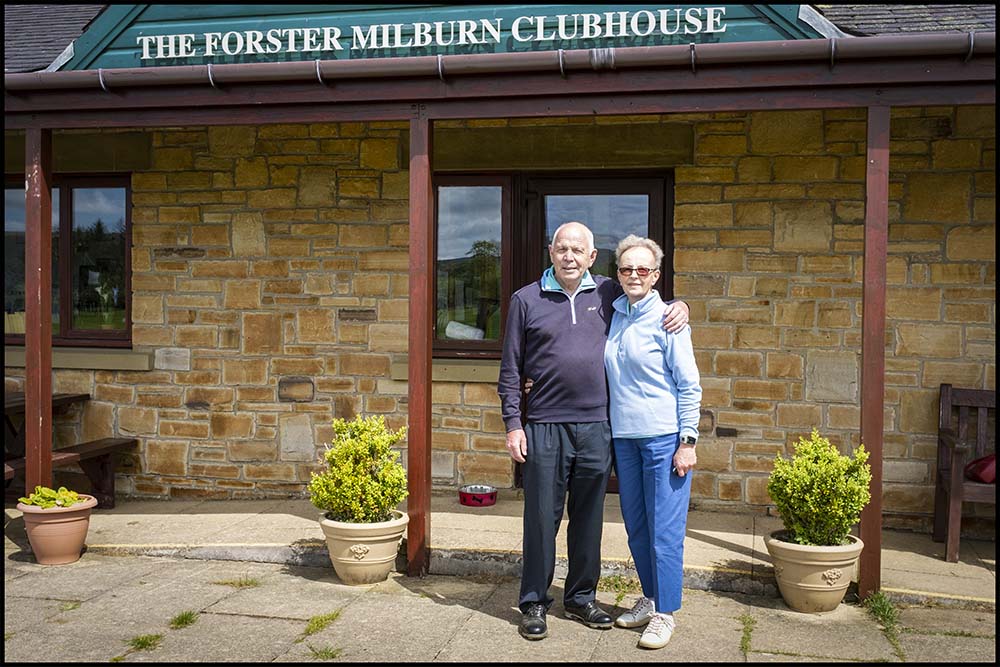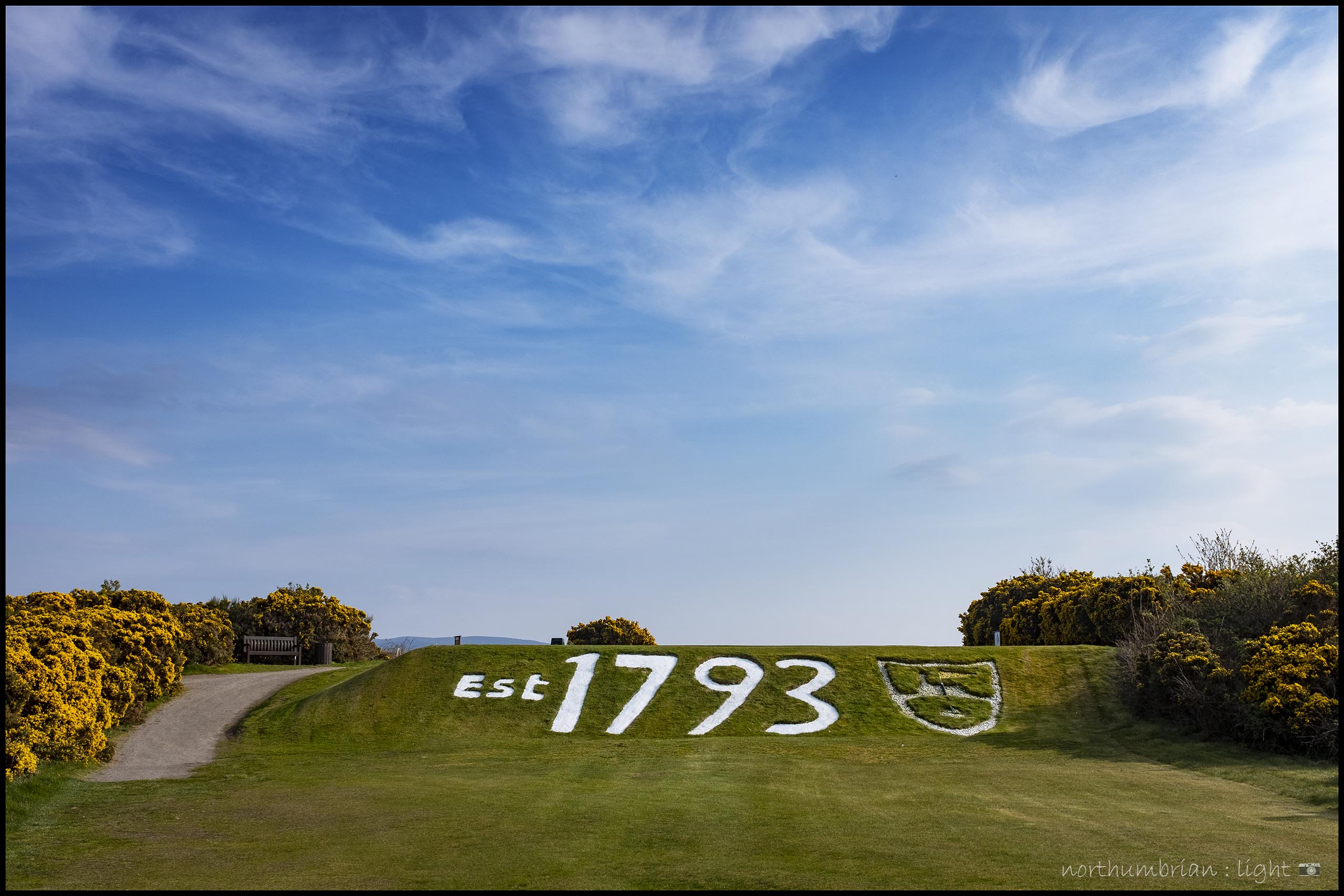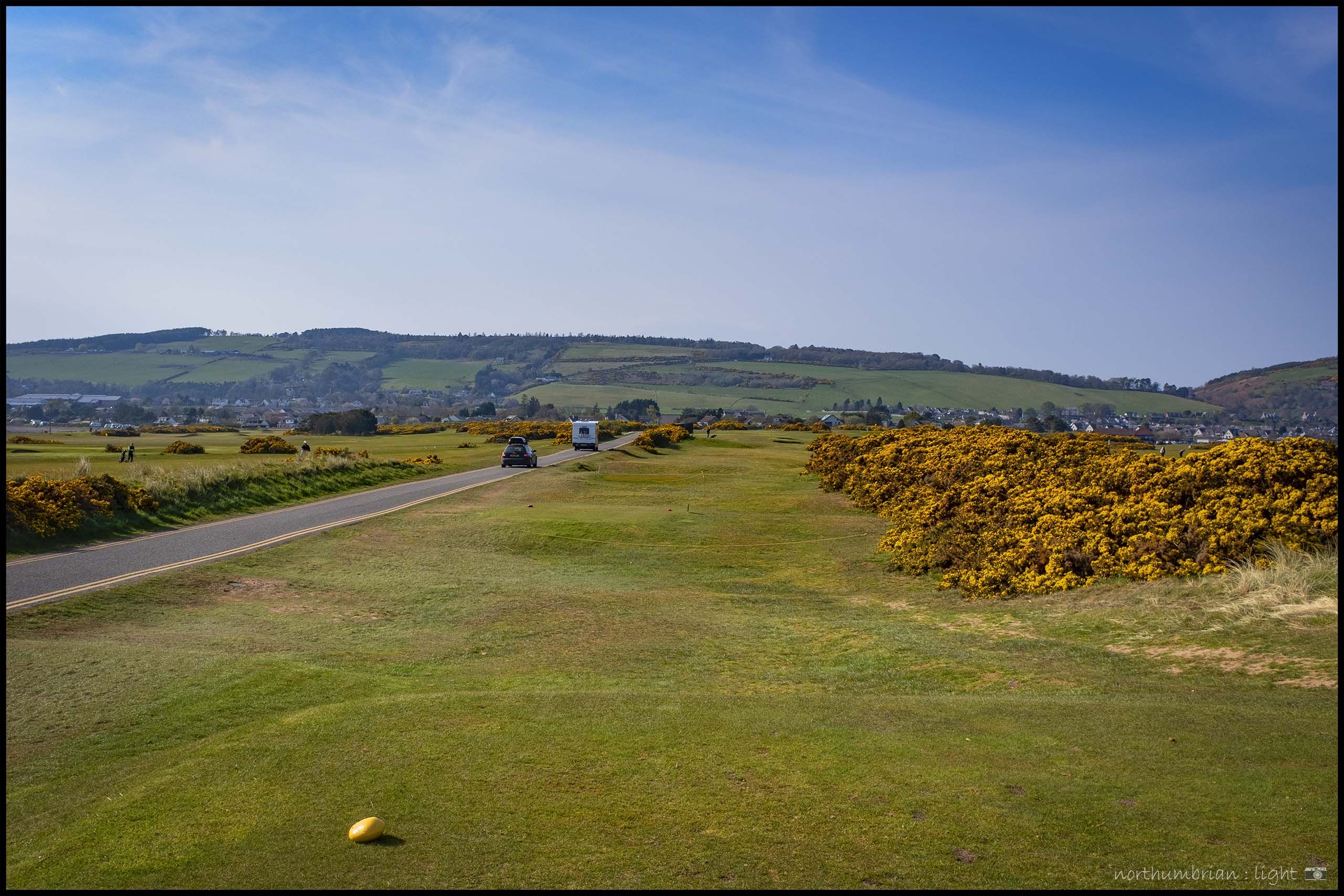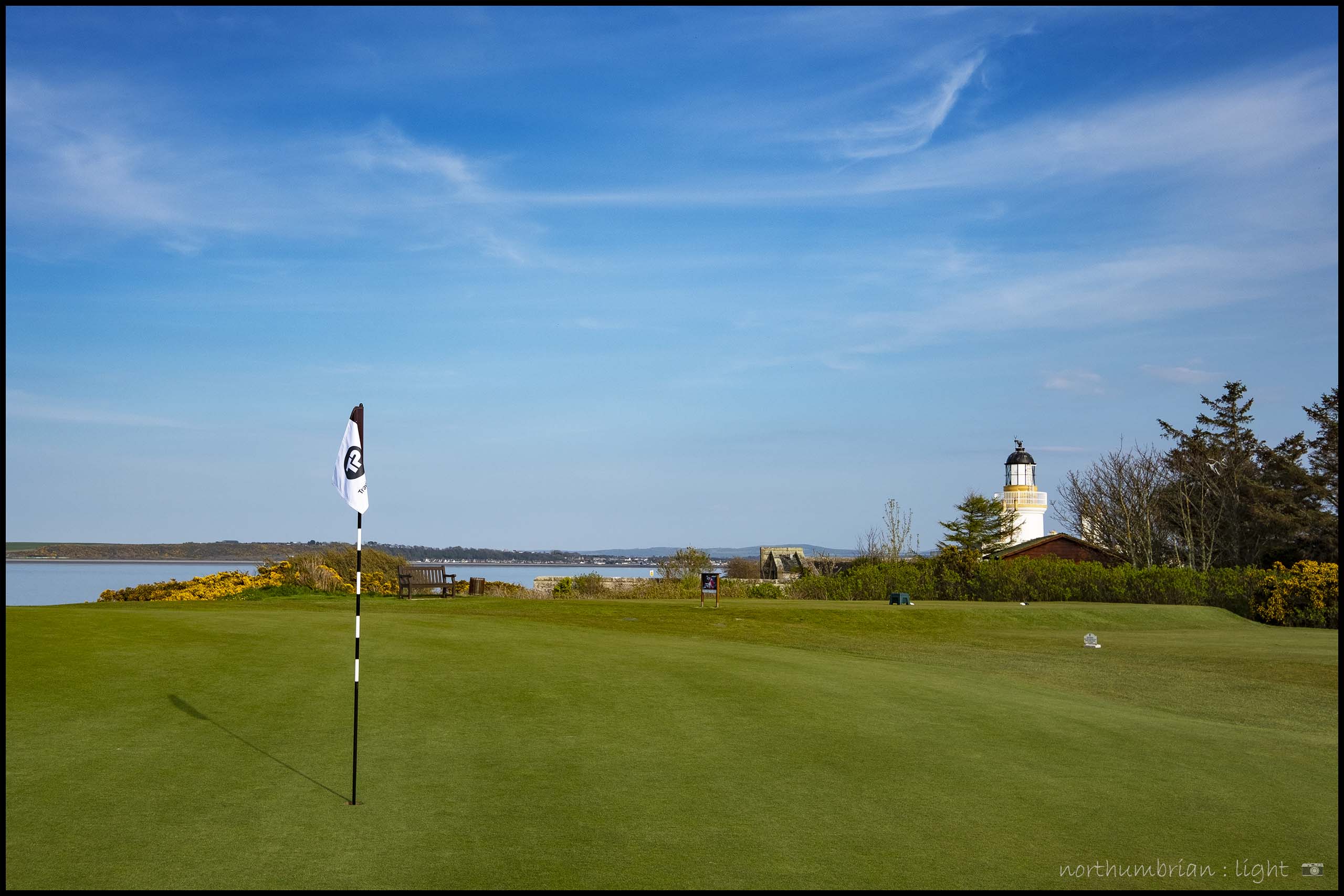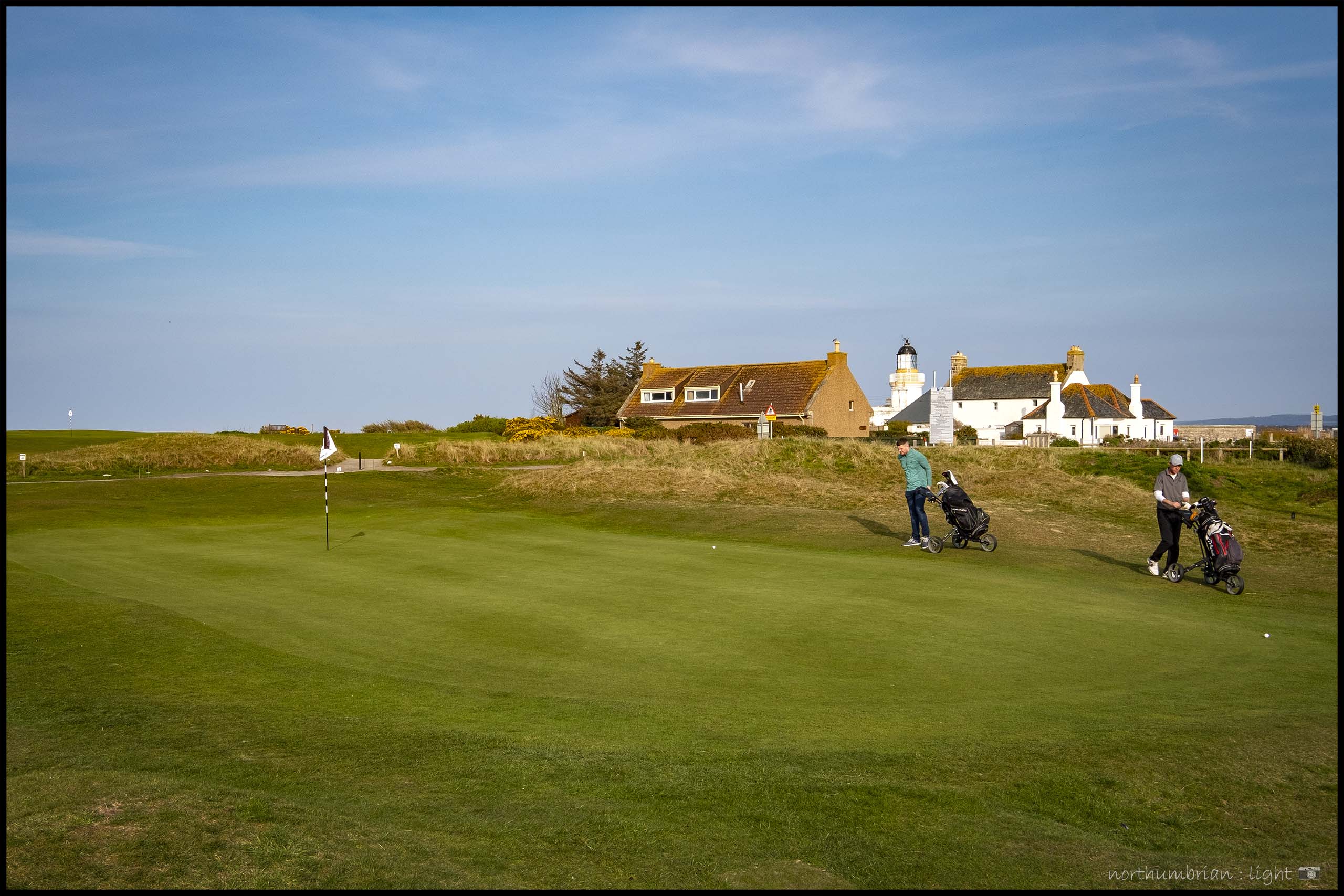The text is finalised, the route set in stone, the website partially updated and the target for publication forecast as September 2021, to coincide with the Golf in the Wild Open at Allendale (date to be confirmed). The journey is not quite as planned. World events intervened, the Scottish border closed and the trip to Anstruther abandoned. This is a major disappointment as it would sit nicely in the return journey and the setting for the course looks wonderful – see Anstruther Golf Club’s gallery. Consequently, there is a journey of 108 miles between Blair Atholl and Lauder without a golf ball being struck – needs must. Perhaps this is the basis for a trilogy – a return journey, playing all the good courses I missed the first time around: Golf in the Wild, Going Back. Will the Good Wife tolerate yet more golfing adventures, I wonder.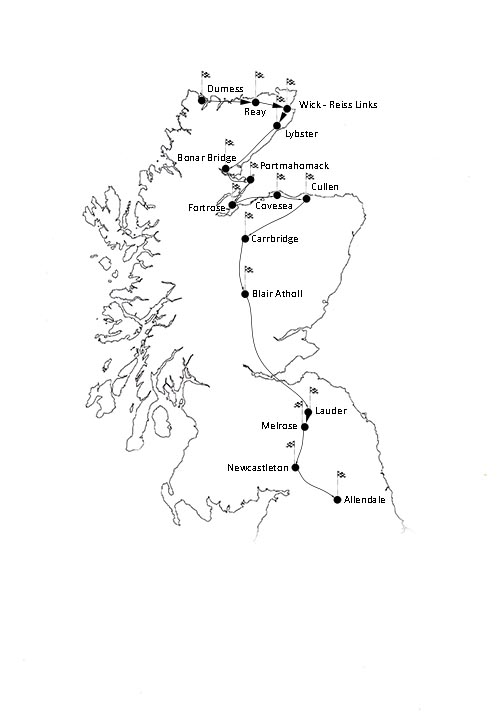
Portmahomack
Chapter 7 of the sequel will take the reader to Portmahomack golf course and the far eastern reaches of the Tarbat Ness peninsula. Despite its easterly location, Portmahomack is famed for its sunsets – uniquely on the east coast, it is a fishing village which contrives to face west.
My youngest has recently produced the image for the chapter heading which features a SEPECAT Jaguar, the British-French jet attack aircraft which was in service with the Royal Air Force and a familiar sight above Portmahomack in the 1970s. As luck would have it, I am in contact with one of the pilots who flew these remarkable machines – Wing Commander Chris Barker RAF (ret).
In the 1970s aircraft navigation systems were not as advanced as we might imagine and finding nearby Morrich More bombing range was assisted by Stevenson’s maritime creation, the Tarbat Ness lighthouse … “we would fly over the lighthouse to get a fix, the most accurate way to do so and find the target for the Jaguar. It had an early inertial navigation system which was prone to drift and which needed frequent updates”. As for that all-important variable, speed … assuming a direct track of 12 kilometres (6.5 nautical miles) from the lighthouse and a level attack (called laydown) at 8 nautical miles a minute, the time to reach to reach the target would be about 49 seconds. They were not hanging about.
Carrbridge
You don’t have to be Inspector Clouseau to realise that, while Golf in the Wild is written as one long glorious journey of golfing delights, the reality is that it is ‘researched’ over several years and many different trips north. As I progress towards completion of the sequel, there has been a longstanding gap between Cullen and Blair Atholl. Heading north on an annual visit to Traigh, I had to take the opportunity to find the missing link. It was a half remembered conversation with our greenkeeper and club secretary, Neil, that went something like “have you not played Carrbridge, it’s first class” – the implication being that any itinerant golfer worth his salt could not possibly have passed it by. I confessed that I had not.
Neil was not wrong. Immaculately presented, a sensible length with nine very different holes and each one imprinted on my memory. And here’s the thing – clubhouse door to clubhouse door, give or take an inch or two, it is exactly half way between Cullen and Blair Atholl – 56.3 miles from Cullen to Carrbridge and 56.2 miles from Carrbridge to Blair Atholl. In every sense, this course was predestined for Golf in the Wild – Going Home.
A late afternoon round was played under ever changing skies but rain did not spoil the experience. I will save a full description for the book but these are some immediate memories:
- The first would be a fine introduction to any course – blind from the tee, I guess a long hitter might find the diagonal burn about half way along the fairway but, for an average Joe, it presents no problem. A neat wooden bridge, a ‘bell’ inspired by the J. Arthur Rank gong, it is a visual delight all the way to the green.
- At the second I clipped a drive an unusually long distance, assisted by a down-slope, it ran too far left towards the first fairway and the burn. From down there and probably elsewhere, what to do next had me perplexed. Protected by tall trees left and right, heavy rough and minimal fairway, the green is nestled in a dip out of sight. I could spend a life time trying to master this hole – every course should have one.
- The third is more straightforward but the fourth is protected by another burn which looks too easily driven. From an elevated tee the fairway heads down hill and slowly but surely, the once visible pin disappears from view.
- The fifth and sixth play across the top of the course – a birdie at the fifth at first attempt and a par at the sixth made for one happy golfer – modern course designers take note.
- The seventh and eighth are both from gloriously elevated tees – there is real satisfaction in the soaring, high-flying ball that descends in slow-motion to the centre of the fairway. The seventh green is on a plateau at more or less the same elevation as the tee so there is march down into the valley and a march up again. The bank in front of the green looks deceptively close so, sad to relate, I selected a mid iron and left myself too much to do with my second – a recurring problem. The eighth, a par 3, looks straightforward except for a house encroaching on the eye-line to the left. Which tolerant soul lives there, I wonder.
- And then to the ninth – a steep climb to another elevated tee with a fine view of the Carrbridge Hotel and the mountains beyond – it’s a tough finish. A dogleg, 231 yard par 3, the green invisible from the tee. As the final act to a golf course, it takes some beating; another hole I could take a life time to master. Carrbridge has it all.
Golf in the Wild – Going Home
The lock-down has had some positives for me – with no golf and unable to ride motorcycles, I have been confined to the keyboard such that the sequel has made significant progress. Once south of Edinburgh, I have been forced to make up my mind about the route home to Allendale. A continuing fixation with abandoned railways meant that defunct railway lines more or less determined where I should go next – Lauder, Melrose and Newcastleton has been the result. I have played Lauder and Melrose on many occasions but Newcastleton will remain a mystery until the Scottish lock-down eases. In the meantime, this design for a new business card gives some indication of the likely cover design:
The Route Home
The route for the first book determined itself. The 9-hole courses on the Scottish northwest coast are limited so, it was a simple task of joining the dots from Lochcarron, northwards to Durness. Returning south, beyond Perth, has been an altogether different proposition, there were simply so many choices. In the end, it came down to expediency – I have been lingering in the north for too long and I need to get home. There are fine 9-hole courses in the Scottish Borders I have played for years so, it seemed logical to return via familiar roads. I then realised there was a direct connection between my final destinations and roads didn’t enter into it – the Lauder Light Railway, North British Railway, the Border Counties Railway and the Hexham & Allendale Branch Line. I simply needed to board an imaginary train and I would be home, where ‘home’ is the old Allendale course at Thornley Gate.
Golf in the Wild – Going Home will visit the following courses, with many a diversion along the way: Reay, Wick/Reiss Links, Lybster, Bonar Bridge, Portmahomack, Castlecraig (closed), Fortrose & Rosemarkie, Covesea, Cullen, Rothes, Blair Atholl, Lauder, Melrose, Newcastleton and Allendale (Thornley Gate).
The eagle-eyed will spot a few 18-hole courses among this selection. In the case of the far north, this is simply because there are no 9-hole courses to play – and anyway, Reay and Reiss Links are suitably wild and simply superb.
The old course at Thornley Gate was only a half mile walk from the station, a good deal closer than the centre of Allendale after which the station was named (Catton would be more appropriate). This was a problem repeated along many stretches of these old lines – stations sited too far from the communities they served. When bus services were introduced, rail passenger numbers inevitably went into steep decline.
Roxie Rogers
It was a delight to meet the multi-talented Roxie Rogers from Nashville at Allendale GC this morning – artist, singer, designer, writer and avid 12 handicap golfer – https://roxierogers.com/
It was interesting to find out that Roxie became aware of the course from my article in the Northumbrian magazine which I think was published as long ago as 2016. These things have a shelf-life well beyond anything we imagine; more evidence that trying to understand the benefits and long term consequences of any form of PR is an almost impossible task.
Roxie and her partner increased the US footfall by 40% this year, following in the footsteps of the Dutton Brothers in May. This in turn has resulted in an interview about Golf in the Wild and Allendale at the US website, Golf Club Atlas. I will update this post with the link when it is published over the next few days. As Roxie, said – the world is just getting smaller and smaller.
Comrie
I have just returned from the annual pilgrimage to Traigh for their Open on 27th July. It is a long way to go for a strokeplay competition and then come to grief at the second, so I was delighted that the club agreed to run a parallel Stableford competition. I supplied the ‘silverware’ and the inaugural Golf in the Wild competition was won by local player, Peter Fleming. My middle-order performance of net 72 and 33 points at least had the merit of not being a ‘no return’. It is always a delight to play at Traigh and this year was no exception, despite the drizzle and threatening clouds. Eigg, Muck and Rum remained out of sight for much of the day.
The weather at Killin on the way up was glorious by comparison and it was good to be back playing this splendid course, the original inspiration for Golf in the Wild. That was Friday, the Traigh Open was on the Saturday, so it was inevitable that we should find somewhere to play on Sunday’s return leg. With time running short, we pitched up at Comrie Golf Club for nine holes and what a splendid nine holes they were. This small course announces itself like no other I know. The New England style clubhouse squats among tall trees and the finely presented 9th green – it is picture-perfect. I had called in once before but, busy competition tees prevented me from turning out and it was this sight of the clubhouse and its surroundings which made me want to return. Would the course disappoint after the excellent first impressions – it did not.
The course is approached by a single track off the A85, adjacent to the village cricket ground with a suitably aged pavilion – the cricket club was founded in 1908, seven years after the golf club. On the day we arrived. a fair was in full swing with children bouncing on ‘Sammy the Snake’ while a Tannoy system was in full flow, broadcasting indecipherable announcements to the assembled masses. It would provide the soundtrack to our round.
The first, Betty’s Knowe, is a middle-distance, blind par 4 at 320 yards off the yellows, from a tee adjacent to the clubhouse. The second shot is also potentially blind into a tight green protected by trees on the left at the lowest level of the course. From here, the fairways tack their path diagonally up the slope towards Laggan Wood, the high point of the course being 160 feet above the first green. The easiest hole, Cauldron, the second, is a par 4 and while relatively short at 238 yards, the front bunkers are likely to catch the unwary. Quarry, the third and a par 3 would be straightforward but for the mountainous rough in front of the tee. Clear this and the elevated green runs straight and true. The fourth, The Pines, would be a no-nonsense 355 yard par 4, were it not for the aforementioned pines which stand too close and to the right of the tee box – negotiate these and it is an uphill drive to another elevated green. I managed a two-putt from off the back of the green so they must be of excellent quality. From the front of the green, there is an excellent view back to the clubhouse, a visual confirmation of just how far you have already climbed.
Above the 4th green is the tee for the par 3 5th, Happy Valley. An uphill drive into another elevated green protected by bunkers left and right, the degree of happiness to be derived from this hole being dependent on missing the sand traps. Another wonderful vista opens out once the 2-putt successfully finds the dark recesses of the hole. My golfing buddies were mightily impressed to see Lord Melville’s Monument on the distant tree covered horizon. Henry Dundas, 1st Viscount Melville was the first Secretary of State for War and became the last person impeached for misappropriation of public money while in office. The monument is unique in its commemoration of a convicted felon – many a 21st century banker will take heart:
The appropriately named 6th, Monument, takes you, in three drives if you are good – two if exceptional, to the top corner of the course. A par 5 with a tight approach, anything right is blocked about by trees although one of our party proved it possible with a high pitch and two putt for a solid par. The seventh, Pulpit, is one fine drive to a sloping fairway, 120 feet below – left there is rough and trees but right, if you are long enough, is the relative safety of the 8th fairway. My natural tendency to ‘fade’ the ball found me on said fairway in the company of four ladies from North Berwick – my pin high shot to the 7th green, leaving a birdie putt from five feet would have impressed, had they bothered to look. My inevitable two-putt was less impressive. Two par fours, Johnnie’s Corner and Coney Hill complete a thoroughly enjoyable round. The test of a good course is ‘can I remember all the holes‘ and on this course the answer is a definite ‘yes‘ – every drive, every putt, every moment taken to admire the view leaves an enduring impression. I will be back.
A great pleasure …
… to meet the Dutton brothers, all the way from the US to play Golf in the Wild at Allendale. From left to right Jeff from Montgomery, Alabama, Mike from Brunswick, Maine and Andy from Wayland, Massachusetts. Once again the course was looking at its best – all credit to Neil, Ian and the weather gods. Pictured at our version of the Grand Canyon 😉
Bon voyage …
… to Roger and Cate! I have met a number of people determined to complete the Golf in the Wild Tour over a period of time and several journeys but this fine couple intend doing the lot in one trip. Their first project/holiday since retiring, the journey started in fine conditions under the bluest of skies – it is always like that at Allendale 🙂 The journey to Durness is scheduled to take three weeks with various detours and the possibility of returning in time for the Golf in the Wild Open on 12th June. Having seen Roger in action (playing off 11), he would be a serious contender! Many thanks to Neil, Ian, Malcolm and Mike C for making them feel so welcome – Allendale at its best.
Eventually …
… all things merge into one, and a road runs through it. With apologies to Norman Maclean.
At the northern end of Fortrose, turn right down Ness Road, signposted Chanonry Point and a single-track leads to the lighthouse and a shoreline dotted with optimists, staring intently out to sea, searching for dolphins. This is the road that cuts through the Fortrose & Rosemarkie golf course, hallowed undulating turf that has played host to golf since 1793. It is a fine stretch of links with arresting views from tee to green on every hole. For the casual visitor, it is difficult to pick out one special hole; they all are.
It is a reassuring coincidence that while the French Revolution’s Reign of Terror was in full swing, the British were building golf courses. As the French honed their guillotines to slice the gentry, we were commandeering the links to slice golf balls. This significant date is carved into the bank of the 18th tee, fully visible from the clubhouse, and styled in the manner of the Fovant Badges. The club proudly claims to be the fifteenth oldest golf course in the world; it is surprising there are so many which are even older.
From the road, the course appears to occupy a narrow strip of land between the town and the lighthouse but there is ample space on both sides and only the wildest of drives is likely to make contact with passing traffic. The exceptions are the 5th, a short par three at the top of the course that crosses the road, and the slightly daunting 12th & 13th where the narrow fairway is bordered by heavy gorse on the right and the road on the left. At the 13th, my drive crossed the road for a subsequent blind 9-iron over gorse in full bloom, onto the edge of the green. It was one of the few holes I parred on the back nine – my game is much improved by blind faith. The back of the 14th green is denoted by large white painted boulders – a strong hint not to go too long otherwise vehicular contact is more than likely.
For all its remarkable vistas, it is the 4th and 5th the top end of the course, nearest the lighthouse, that leave the most enduring impression; a shame, in some respects, that they come so early in the round. The signature hole, the fourth, Lighthouse looks innocuous from the tee to the uninitiated (stroke index 1, par 5 off the whites and a par 4 off the yellows). Those of us, middling golfers, who reach for the driver, seeking distance under all circumstances, will be in for a sad surprise. The marker post may offer an idealised line for the competent but it also coincides with a deep dip in the fairway and some unpleasant rough to the right. I got lucky, landed on an elevated path, took a drop from knee-height, of course, and then found myself with an inviting long pitch to the green. Anything long into the green and you are faced with a knee-trembling downhill putt while anything short is likely to roll off the front and into a severe dip. I threatened the pin, briefly, and then watched in despair as the ball rolled some distance off the green into the aforementioned dip. I was moderately happy to walk off with a six – I am not an ambitious golfer. The lighthouse provides the perfect backdrop throughout – designed by Alan Stevenson, it first came into service in 1846 and adjoins a collection of Egyptian styled keepers cottages.
To the right of the 4th green can be seen the tees for the 5th, a short par 3, Icehouse, which crosses the road and any traffic entering or leaving the Chanonry Point car park. The hardest hole on the course is followed by one of the ‘easiest’ at stroke index 17. There is rough almost all the way to the green which cosies up to the road and, at the back, there is the beautiful briny sea. To the left are a collection of buildings which include the Ferry House, once an Inn and home to the ferryman who plied the waters between Chanonry Point and Fort George. A passenger ferry operated until 1953.
I found the 5th green in one with a ‘perfectly’ executed pitching wedge – the subsequent 3-putt was not so cleverly executed. Worse things happen – as if to emphasise this point, Undiscovered Scotland tells this salutary tale: In about 1675 the point was where Kenneth Mackenzie or Coinneach Odhar, better known as the Brahan Seer, is said to have met his end. The Brahan Seer is often thought of as a Highland Nostradamus. When asked by Isabella, 3rd Countess of Seaforth, why her husband was late returning home he first prevaricated, but when pressed simply told her that her husband was dallying in Paris with a lady who was more attractive than the Countess herself. Coinneach Odhar’s reward was to be hauled off to Chanonry Point where he was burned to death in a barrel of tar. He overlooked the golden rule of seers, or consultants of any sort: first find out what the client wants to hear. It is difficult to think of a worse outcome – the 4-putt perhaps.
